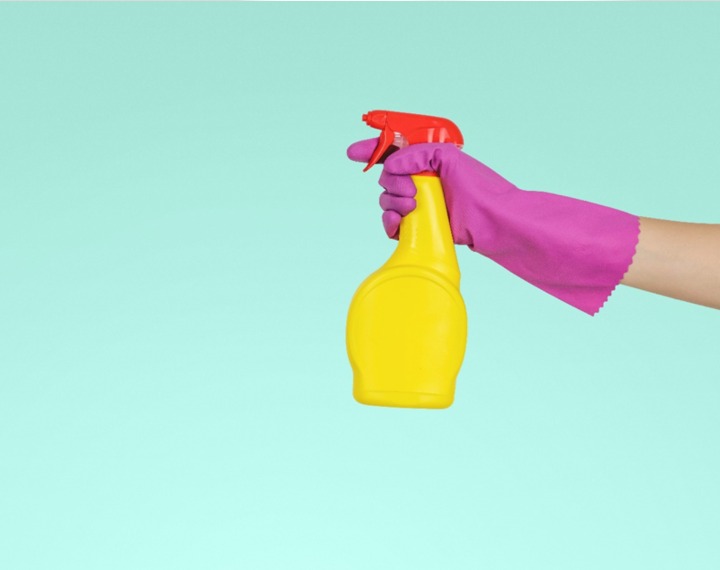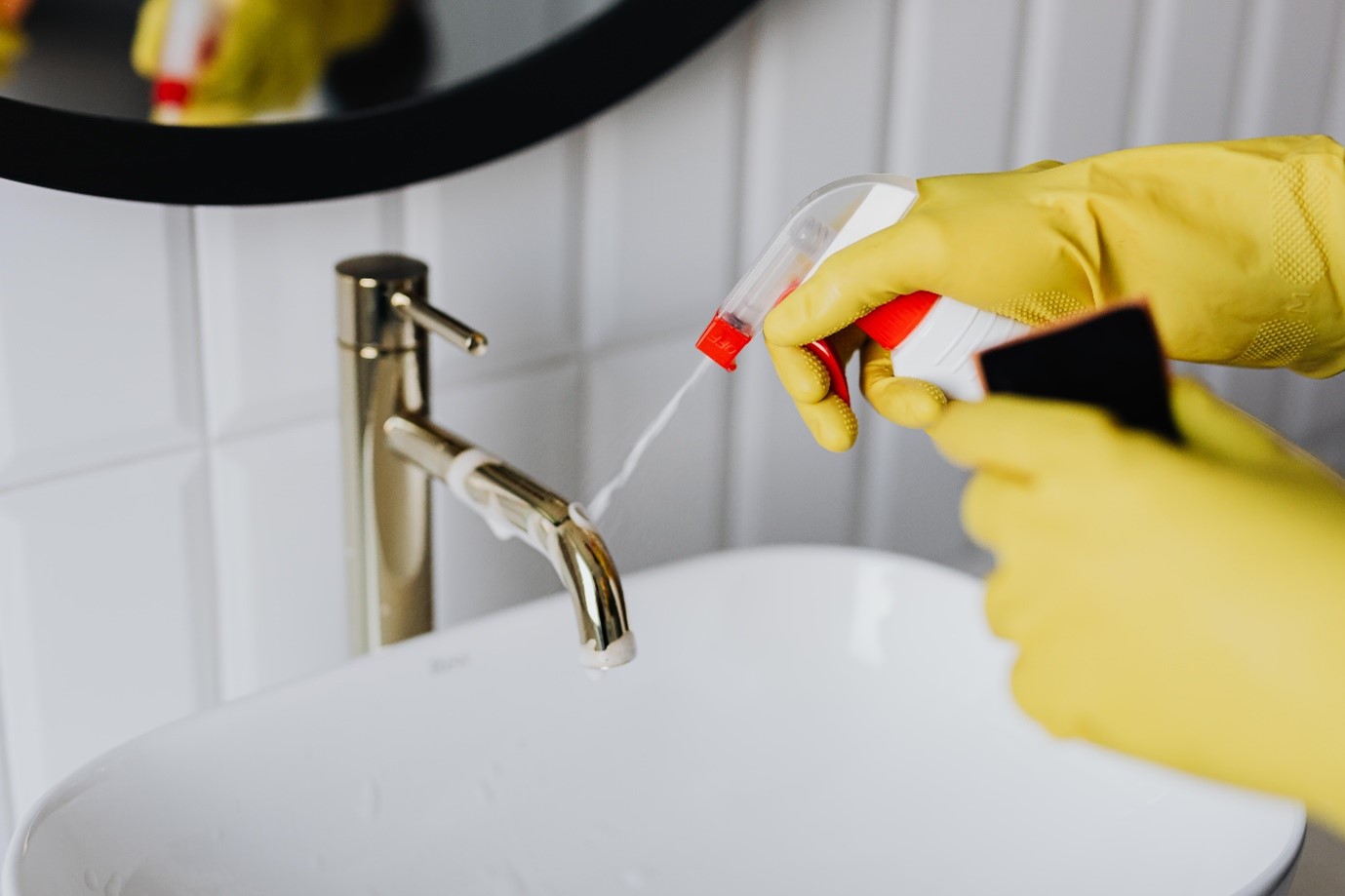Care Home Cleaning: Schedule & Tips for Daily & Deep Cleaning
 Hygiene will no doubt be a priority not just for care home managers, but for staff, residents, and their families. After all, keeping your care home clean and preventing the spread of infection doesn’t just keep your vulnerable residents safe, but everyone who visits the facility. And the law states under Regulation 15 of the Health and Social Care Act 2008, that “all premises and equipment used by the service provider” must be clean, secure, and suitable for the purpose for which they are being used. What this means is that every care home is legally bound to offer a clean and hygienic environment, as high levels of cleanliness can help prevent infections and other related issues.
Hygiene will no doubt be a priority not just for care home managers, but for staff, residents, and their families. After all, keeping your care home clean and preventing the spread of infection doesn’t just keep your vulnerable residents safe, but everyone who visits the facility. And the law states under Regulation 15 of the Health and Social Care Act 2008, that “all premises and equipment used by the service provider” must be clean, secure, and suitable for the purpose for which they are being used. What this means is that every care home is legally bound to offer a clean and hygienic environment, as high levels of cleanliness can help prevent infections and other related issues.
However, care home cleaning is a large and never-ending task, so without a thoroughly detailed list, you may find you miss some less obvious areas. To help you keep on top of your residential home cleaning, we’ve put together this handy cleaning guide. Here we’ll cover the most important care home deep and daily cleaning tasks for your staff, the janitorial supplies your facility needs, and give you some tips and guidance for keeping on top of your schedule. You’ll also find a printable care home cleaning schedule template at the end of this guide, to help you and your staff keep track of your nursing home cleaning tasks.
- Care home cleaning essentials
- Care home daily cleaning schedule
- Care home deep cleaning schedule
- Tips and guidance for cleaning in care homes
- Care home cleaning schedule template
Care home cleaning essentials

As any care home manager knows, the importance of prioritising hygiene in a care home cannot be overstated. As well as following a thorough care home cleaning schedule to keep on top of your tasks, you should also make having a cupboard well stocked with the most effective cleaning supplies one of your top priorities. There are a wide variety of products you’ll need as there are so many different areas to keep on top of, from cleaning your nursing home kitchen and communal areas, to bathrooms and bedrooms. The supplies below are essential for any nursing facility, for both daily and deep cleaning procedures in care homes:
- Hard surface cleansers and wipes
- Glass cleaners and polish
- Wood cleaner
- Bleach and disinfectants
- Descaler
- Degreaser
- Oven cleaner
- Toilet cleaner
- Concentrated cleaning products
- Odour neutraliser
- Mould and mildew remover
- Dishwasher powders and tablets
- Washing up liquid
- Floor cleaners
- Wet and dry carpet cleaning solutions
- Stain remover
- Laundry essentials
You’ll also need a selection of care home cleaning equipment, including the following:
- Cloths and scourers
- Kitchen towel
- Centrefeed rolls
- Grout cleaner
- Extendable dusters
- Vacuum cleaner and accessories
- Floor cleaning machine
- Dustpan, brushes, and brooms
- Mops, buckets, and handles
- Bin bags, including pedal bin liners, swing bag liners, and black sacks
- Protection for your cleaning staff, including gloves and disposable aprons
- Other cleaning equipment, including cleaning trolleys and cleaning signage
As well as stocking up with these essential cleaning supplies and equipment, you may want to have some baking soda and white vinegar in your cleaning cupboard. These two common household items have a number of benefits when used for cleaning: vinegar can be effective for cleaning grout, fridges, and microwaves, while baking soda can be used to gently clean painted walls, deodorise chopping boards, and remove stubborn stains and residue from cookware like pots and pans.
Care home daily cleaning schedule

There are a large number of cleaning jobs in care homes which should be performed daily, not just to keep your facility looking presentable but for infection control too. One of your main daily tasks when care home cleaning is to wipe surfaces down with an antibacterial spray or wipes, but there are a number of other tasks to complete multiple times throughout the day, including sweeping, tidying, checking for stains, and replenishing products. The following cleaning jobs should be done at least twice daily in care homes:
- Wipe down touchpoints: Door handles, handrails, light switches, pull cords, television remotes, etc.
- Clean any surface in a communal area which is touched regularly, such as coffee tables, dining tables, reception desks, window sills, and pens for signing at the facility
- Wipe down kitchen surfaces after each use
- Clean overbed tables and bedside cabinets
- Clean wheelchairs between each use. Remember to check both the frames and the wheels as well as the seat
- Clean moving equipment, nursing equipment, and stair lifts between each use
- Clean baths, showers, bath hoists, and patient lifting hoists between each use
- Clean and disinfect toilets, toilet brush holders, sinks, and taps
- Replenish hand soap, hand sanitiser, hand towels, and toilet roll if running low
- Empty the bins if full and wipe down the lids
- Check for debris on floors and sweep/mop accordingly
- Check for debris on furnishings and clean/remove stains accordingly
You should also perform the below cleaning procedures in your care home once daily:
- Polish furniture
- Sanitise chairs and tables
- Clean covers of radiators
- Wipe down the outside of kitchen appliances, including microwaves, fridges, and ovens
- Check for marks on walls and clean/remove stains accordingly
- Sweep and mop floors
- Vacuum carpeted areas
- Clean mirrors and tiled walls
- Clean bed frames
- Vacuum mattresses and check for stains
- Do laundry
- Clean medicine trolleys and cupboards and check contents
Care home deep cleaning schedule

Having a deep cleaning schedule in place for your care home is vital too. As these cleaning procedures are done less often, it’s easy to let the deep cleaning jobs slip through the cracks. But deep cleaning is vital not just for infection control, but for keeping your care home furniture and interiors in the best condition. This can extend their lifespan and save your facility money in the long run. The following deep cleaning tasks should be performed weekly in your care home cleaning schedule:
- Clean windows and glass doors inside
- Clean skirting boards
- Clean inside of fridge
- Check dispensers for restocking
- Wipe down picture frames and curtain rails
- Wipe down lamp shades
There are also a number of other care home cleaning jobs which need to be performed. While these tasks don’t need to be done regularly, try to schedule the following cleaning jobs at least once every other month:
- Clean carpets and rugs
- Buff hard floors
- Clean curtains
- Deep clean furnishings, like sofas and armchairs
- Sweep and mop the floor behind fridges and freezers
- Organise and clean the inside of food storage cupboards, getting rid of out of date items as you go
- Wipe down inside of bins
- Deep clean the oven
- Clean windows and glass doors outside
- Deep clean mattresses
- Clean bathroom grouting
- Clean and sanitise hard-to-reach areas (such as the tops of wardrobes and roof fans)
- Clean vents
- Remove radiator covers to clean and disinfect
- Check for areas which may require descaling
While not a cleaning task, you may also want to check your documents whilst doing these jobs to ensure that all information you have is up to date. And before a deep cleaning session, it’s also a good idea to check that all the products you’ll be using are in top condition and aren’t past their best.
Tips and guidance for cleaning in care homes

While being aware of all the tasks you should include in your nursing home cleaning schedule is vital, it’s also important that you know the best way to put them into action and maintain the cleanliness of your facility. Read on for more guidance on effective cleaning in care homes.
Colour coding for cleaning in care homes
In any healthcare setting, colour coding cleaning products is essential for reducing the risk of cross-contamination. The National Colour Coding System, made by The National Patient Safety Agency, was created as an easy-to-understand colour coding scheme for all healthcare settings to follow. There are four core colours in this system:
- Red: This is to be used in bathrooms, including for showers, toilets, basins, baths, and floors.
- Blue: This is for general lower risk areas, including for offices, communal areas, and resident rooms.
- Green: This is for any catering areas in your facility.
- Yellow: This is for isolation areas.
You can find out more about this with our blog post on colour standards and the benefits of colour coding.
Where should cleaning materials be kept in a care home?
When it comes to storing cleaning chemicals in your care home, resident safety should be your top priority. Keep hazardous products away from vulnerable residents by storing them in a securely locked, well ventilated area, and keep them in there all the time they are not in use. A spacious cupboard is the best storage place, as this not only prevents the risk of bottles falling and spilling, but it allows you to easily organise your cleaning essentials. This in turn makes it easier to check your supply and dispose of any products which have been damaged or are out of date.
Which cleaning jobs in care homes should be outsourced?
While you and your staff can perform the majority of cleaning jobs in care homes, there are some procedures which are best outsourced. This includes the following cleaning tasks:
- Professionally deep cleaning furniture
- Cleaning air ducts
- Outdoor cleaning and tidying, such as gutter cleaning and pressure washing paths and outdoor furniture
How to stay on top of your daily care home cleaning schedule
One of the best ways to keep on top of the cleaning and tidying schedule in your facility is with a physical care home cleaning checklist. By ticking off a task once complete, you and your staff can make sure that no important jobs are slipping through the cracks. Plus, this makes sure that staff won’t be repeating tasks unnecessarily, so they can spend their time in the most effective way.
No two days are the same in healthcare settings, which can make sticking to your schedule difficult even if you have a physical checklist to follow. If you or your staff find that time gets away from you during the day, you may also benefit from setting alarms so you know it’s time to clean.
As well as making sure any of the important cleaning procedures in care homes don’t get forgotten, helping your staff clean as efficiently as possible will help you speed up the process to make keeping on top of cleaning easier. Ensure that staff are provided with regular training so that they have all the information they need on how to clean both quickly and thoroughly. The Care Standards Act 2000 (standard 28) requires three days of training per year for care home staff, but you may want to supply additional cleaning training to keep your facility hygienic and prevent infection spread.
Care home cleaning schedule templates
To make maintaining the hygiene of your facility as straightforward as possible, we’ve created some care home cleaning schedule templates. Our daily, weekly, and bimonthly care home cleaning checklists contain thorough lists of the essential cleaning procedures to perform in your facility. Simply print these checklists and tick off each task once completed to help yourself and your staff keep on top of your cleaning rota.
Maintaining a regular care home cleaning schedule is essential for any facility. The printable schedules and information in this guide will help you ensure that your healthcare setting is as hygienic as possible to prevent the spread of infection and discomfort for your residents.
We have a variety of products to help you keep your care home clean, including cleaning supplies, cleaning consumables, dispensers, bins, and odour control products. We also have a wide selection of other healthcare essentials, including patient care products, care equipment, medical supplies, and more, so browse our full range today.





